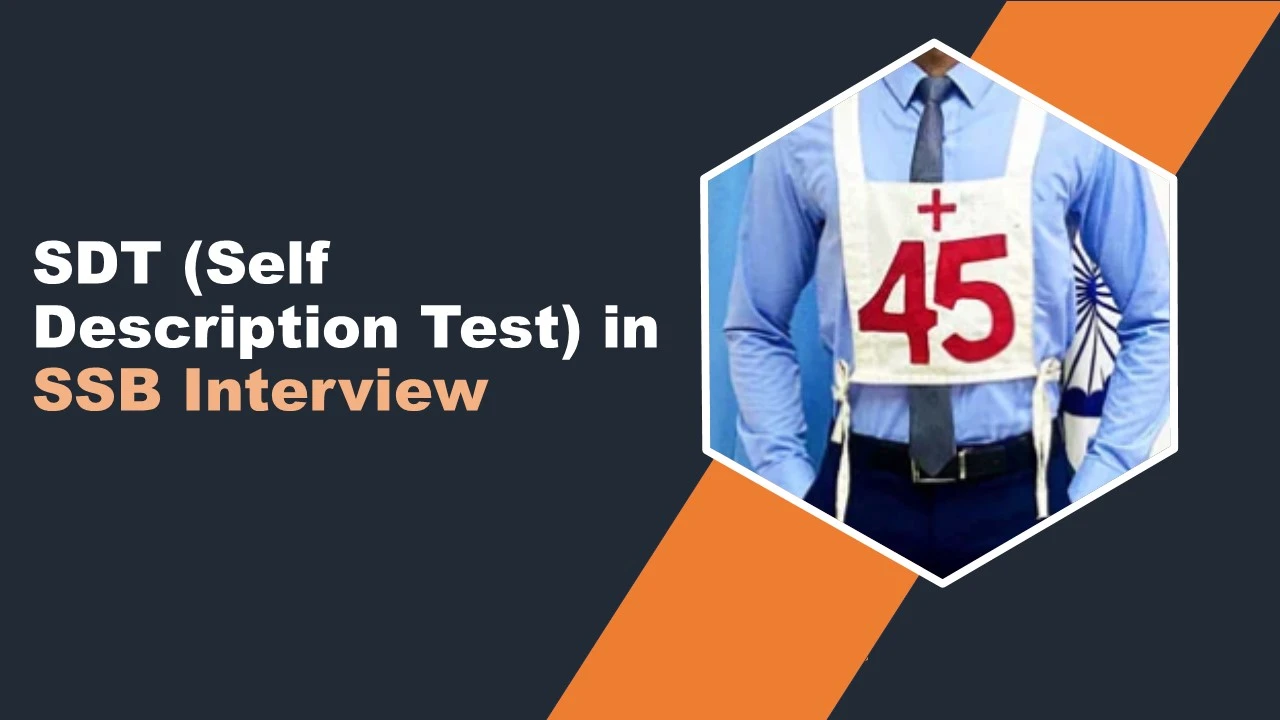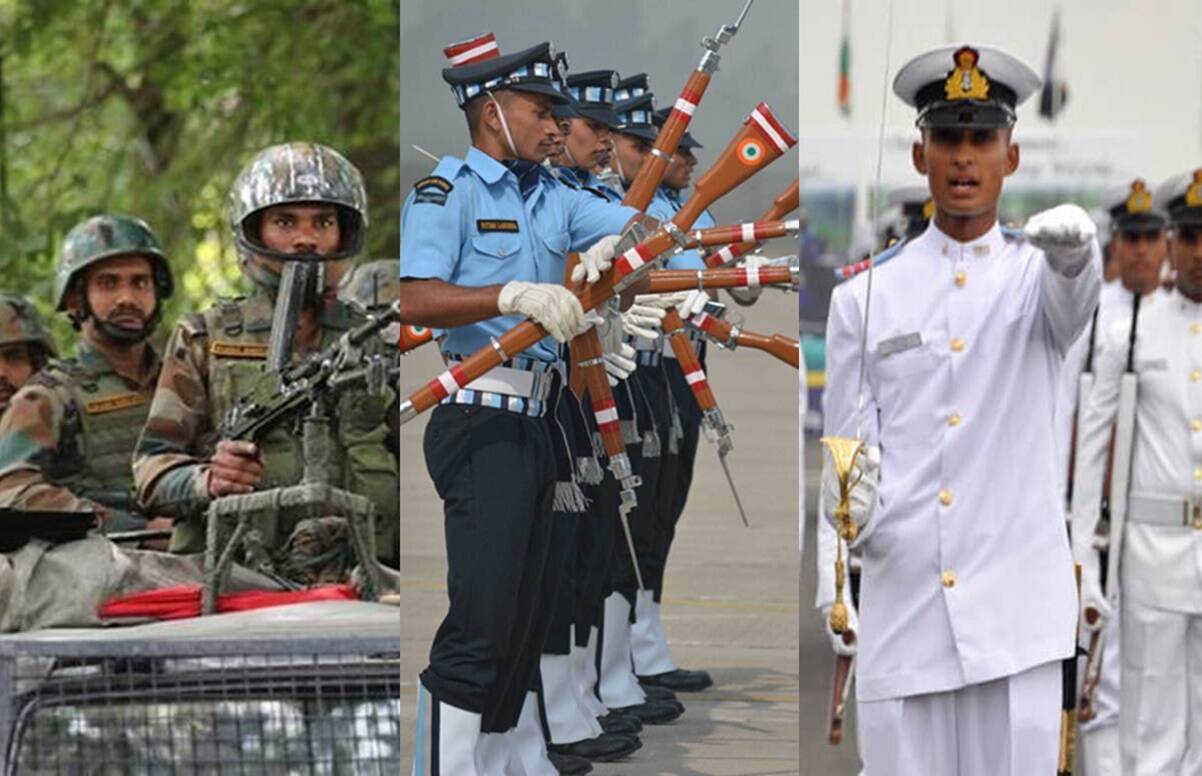SSB Interview: SDT (Self Description Test)
The Self-Description Test (SDT) is a key part of the SSB (Services Selection Board) Interview and plays an essential role in evaluating a candidate’s self-awareness, personality traits, and ability to reflect honestly on their strengths and weaknesses. This test, conducted during the Psychological Tests phase, provides insights into how a candidate perceives themselves and how others view them.
In this article, we’ll explore the format of the SDT, tips to perform well, and how you can prepare effectively for this important test to increase your chances of success in the SSB Interview.
What is the Self-Description Test (SDT)?
The SDT is a written test designed to assess your self-perception and personality. In this test, candidates are required to write detailed responses to specific prompts about their own personality, as well as how others (parents, teachers, friends, etc.) perceive them.
This test helps assess:
- Self-Awareness: Understanding of your own personality, qualities, and areas for improvement.
- Emotional Maturity: Ability to accept constructive criticism and learn from it.
- Realistic Self-Perception: Honesty and balance in highlighting strengths and acknowledging weaknesses.
- Alignment with OLQs: Evaluation of Officer-Like Qualities (OLQs) such as responsibility, leadership, and integrity.
Format of the Self-Description Test
In the SDT, candidates are typically asked to write their views in response to five specific prompts. You have 15 minutes to complete this test. The questions generally cover the following areas:
- What your parents think about you
- What your teachers or superiors think about you
- What your friends or colleagues think about you
- What you think about yourself
- What kind of person you aspire to be in the future
Importance of SDT in the SSB Interview
The SDT is not about giving perfect answers but about reflecting your genuine personality. The assessors use this test to cross-check your responses with other parts of the interview, such as the Personal Interview, Group Tasks, and the Psychological Tests. Consistency and authenticity are key, as they indicate clarity of thought and honesty.
Tips to Perform Well in the SDT
- Be Honest and Realistic
- Avoid exaggeration or overly idealistic statements. Be truthful about your strengths and areas for improvement.
- Highlight Positive Traits
- Mention qualities like leadership, teamwork, discipline, and problem-solving abilities. Use examples to back these traits if necessary.
- Acknowledge Weaknesses Constructively
- Mention your weaknesses but frame them as areas you are actively working to improve. For example, instead of writing “I am short-tempered,” you can say, “I am learning to manage my emotions better under stress.”
- Stay Consistent
- Ensure your responses align with what you’ve mentioned in your PIQ form and during the Personal Interview. Any contradictions can affect your credibility.
- Structure Your Answers
- Write in clear, concise sentences. Use a simple structure, such as starting with positive qualities and then moving to areas of improvement.
- Focus on Future Goals
- For the “aspirations” section, discuss realistic goals that reflect growth and align with the qualities of an officer, such as developing leadership skills or contributing to the nation.
- Practice Writing
- Regularly practice writing your self-description to improve clarity and time management during the test.
Sample SDT Responses
Here are examples of responses for each prompt:
- What your parents think about you
“My parents think I am responsible and disciplined. They believe I am hardworking and focused on my goals. They also advise me to be more patient in stressful situations.” - What your teachers think about you
“My teachers consider me a sincere and dedicated student. They often appreciate my ability to grasp concepts quickly and my willingness to help classmates. They encourage me to participate more in discussions to build my confidence.” - What your friends think about you
“My friends see me as helpful, trustworthy, and approachable. They often rely on me for advice and support. They also feel I can be overly serious at times and encourage me to relax more.” - What you think about yourself
“I believe I am disciplined, hardworking, and dependable. I enjoy learning new things and taking on challenges. However, I recognize the need to improve my time management skills to achieve my full potential.” - What kind of person you aspire to be in the future
“I aspire to be a confident and effective leader who can inspire and guide others. I aim to improve my communication skills and emotional intelligence to become a well-rounded individual who contributes positively to the armed forces and society.”
Common Mistakes to Avoid in SDT
- Being Overly Idealistic: Avoid writing answers that seem too perfect or unrealistic.
- Ignoring Weaknesses: Completely skipping weaknesses can make your responses appear insincere.
- Contradictions: Ensure your answers are consistent with your PIQ form and other parts of the interview process.
- Rushed Writing: Take your time to write clear and legible responses. Avoid hasty, incomplete answers.
Conclusion
The Self-Description Test (SDT) in the SSB Interview is a vital tool for assessing your personality, self-awareness, and alignment with Officer-Like Qualities. By preparing thoroughly and practicing regularly, you can present a genuine and balanced view of yourself, increasing your chances of success.

